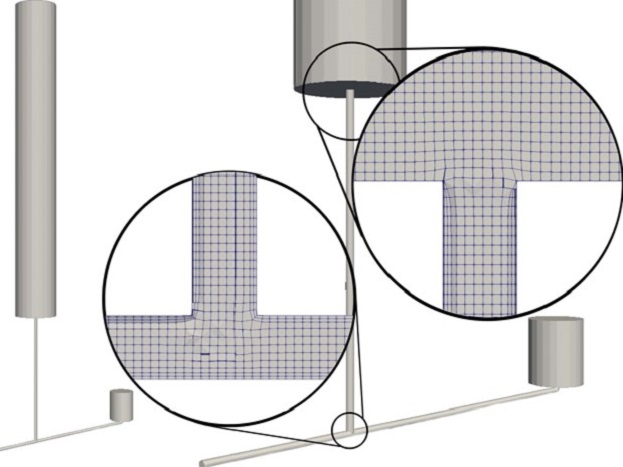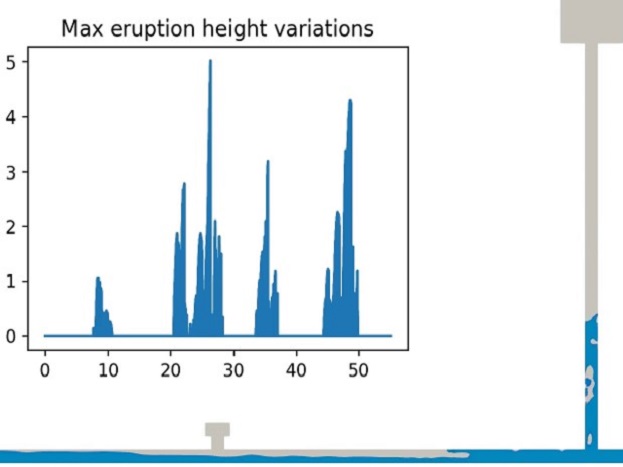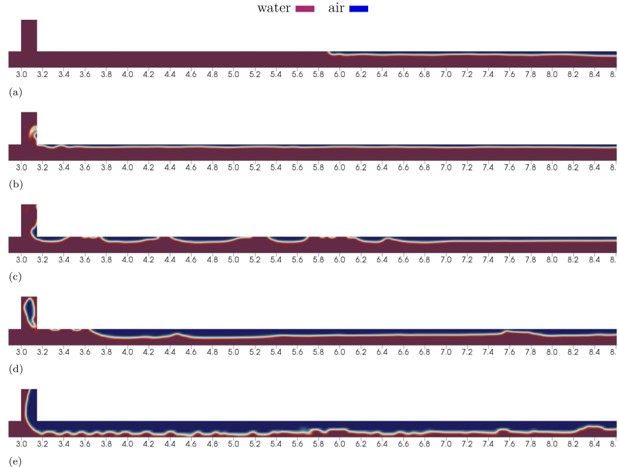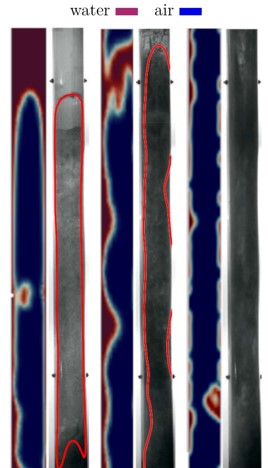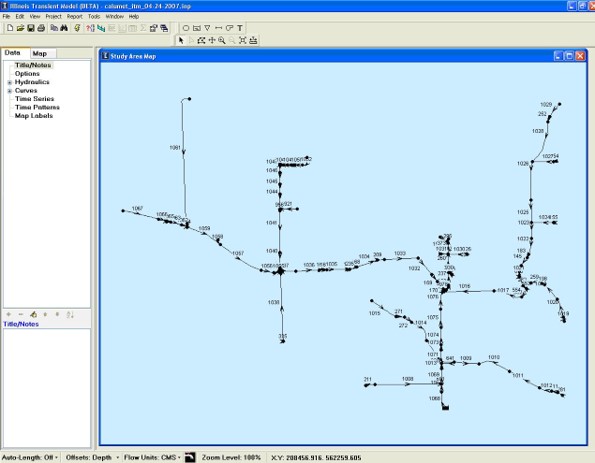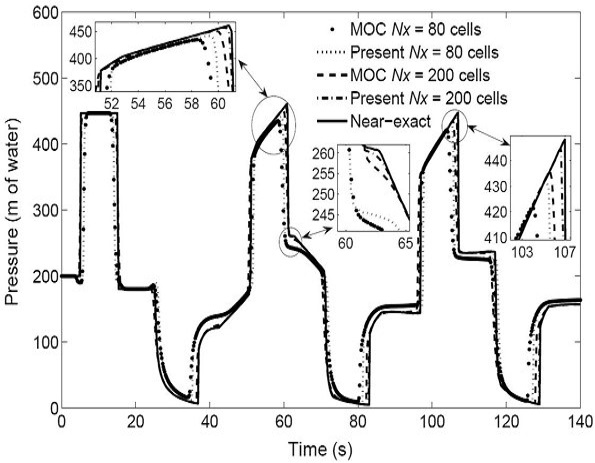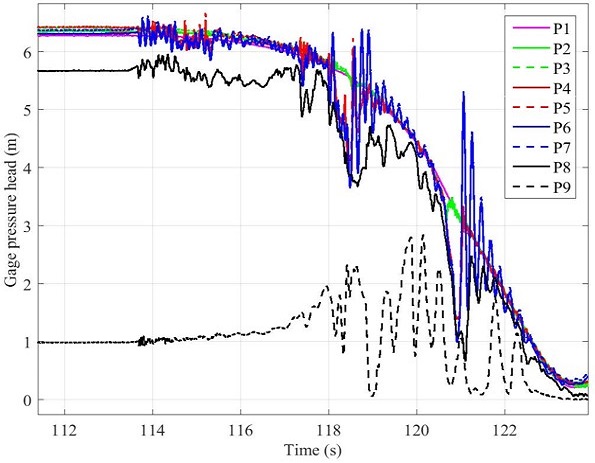Geyser Eruptions and Hydraulic Transients
Violent geysers occur due to the uncontrolled release of air at a vertical shaft. Explosive geysers are highly destructive. Many municipalities operate their combined sewer systems (CSSs) at a fraction of their maximum system capacity to avoid geysers. Operating CSSs at a fraction of their maximum capacity means that combined sewer overflows (CSOs) occur more often than they should. CSOs are a major water pollution concern for approximately 772 cities in the U.S. Hydraulic transients.
Our transient flow research focus on the development of mathematical and numerical models for modeling transient free surface flows, transient pressurized flows and the simultaneous occurrence of free surface and pressurized flows in single and two-phase flow conditions (air-water interaction). Dr. Leon led the development of the state-of-the-art Illinois Transient model (ITM), which is being used for the transient and non-transient analysis of combined sewer systems in U.S. cities such as Chicago, Cleveland, Pittsburgh, San Francisco, and Dallas, and worldwide in countries such as Switzerland, France, Germany and New Zealand.
Experiments on Violent Air-water Geyser Eruptions ?
Our research has produced violent geysers in a laboratory setting for the first time. The geysers produced consist of a few consecutive eruptions (three to eight) within a time frame of a few seconds with heights that may exceed 30 m. These characteristics resemble those geysers that occurred in actual stormwater and combined sewer systems. A YouTube video of one of our geyser flow experiments can be seen here. The pictures below show snapshots of some of our geyser experiments.
Transient Flows in Urban Systems
Our transient work is vast. Some of our work includes the impact of gate closure in the formation of hydraulic transients in combined sewer systems, potential for surge formations in closed-conduit systems, simultaneous occurrence of free surface and pressurized flows in closed-conduit systems, analysis of reservoir filling in combined sewer systems ranging from dry-bed flows, to free surface flows, to partly free surface flows-partly pressurized flows, to fully pressurized flows. For our transient research, we have used CFD modeling, experimentation and our own transient model (Illinois Transient Model), which has been used worldwide for the analysis of flow dynamics in stormwater and combined sewer systems.
Website visitors since January 30, 2020
COPYRIGHT, ARTURO S. LEON


























